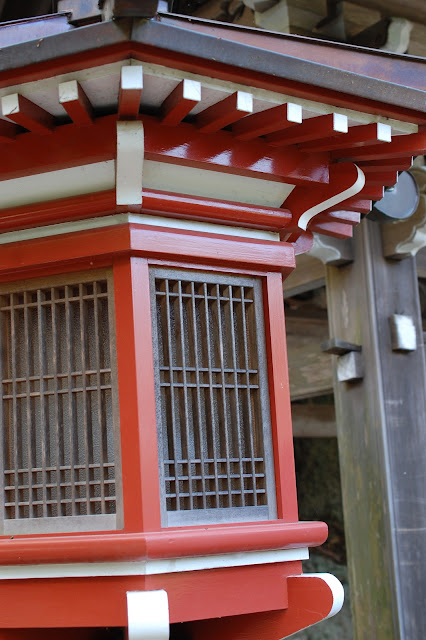Well, it’s exactly a month before I
leave Japan and before I go, I want to cram as much Japanese culture as I can
into my life. That’s why I went to bunraku today.
Bunraku is the traditional Japanese
puppet play. However, these are not for children! The stories are complex, filled with meaning,
and really, really bloody. Having always wanted to see bunraku after attending
a lecture with Professor Charo D’Etcheverry of UW-Madison that had movie clips,
I finally saw it today.
It was excellent. First we were
treated to a class-only introduction to bunraku by the head of the National
Bunraku Theater and his wife who translated. Since bunraku is a man-only world,
she really stressed that she was there in a non-official capacity. But oh, it
was fun. The headman showed us how the puppets work and gave demonstrations.
Each of the “main character” puppets requires three people to operate it! The
main guy does the head and right arm, and then there’s a guy for the left arm
and a guy for the feet! Though, to be fair, the women dolls don’t really have
feet unless they’re part of the story. Be sure to check out the videos I shot during the explanation--they're really cool!
Also the heads are amazing, with
several different knobs that you can push to make the head bob up and down,
make the eyes turn left/right/crossed, raise the eyebrows, narrow the eyebrows,
and even move the mouth! Some special women puppets have a small nail sticking
out of their mouth so that when they weep, they can hold a kimono sleeve to
their face (a typical sign of crying dating to around the Heian Era (794-1185).
 |
| Crying into her sleeve |
 |
| Biting her sleeve in torment |
 |
| I'm making her wave at you! |
The bunraku play itself was pretty
epic. There were two plays—both part of longer plays. The first one was about a
samurai who had disgraced himself and was now living with his loyal retainers.
In the way of all plays like this there were swords, there was death, there was
mistaken identity, and, of course, there was the selling of a woman into a
brothel (I swear, it’s much better than this, but it’s late and I’m doing this
for the shock value).
The next play really took my breath
away. It was the story of a merchant daughter living in the court who
discovered a plot against her lord by her arch enemy who beat her with a dirty
shoe (which is kinda like throwing someone in manure and ordering them to eat
it, by the standards of that time). In order to prove that she is not making it
up, she kills herself and then her maid (of samurai blood) goes mad and murders
the arch enemy and proves to the lord that treachery is among his men (and
women).
Watching the puppets is a mesmerizing
experience—once you get into the flow of it, you ignore the people playing the
puppets and the puppets become people themselves. According to the master, it
takes around 40 years to master the playing of a puppet. AMAZING. The sheer
artistry of the puppets awes me. On stage, the puppets were so skillfully
manipulated to show various emotions and they MOVED LIKE HUMANS. If I wasn’t so
in awe, it would be eerie.
One of the main characters, the maid
who avenges her mistress, was so realistic I wept when she wept, grew angry
when she did and generally fell in love with all of her kimono which matched so
well. My favorite part was when she made tea—it really looked as if she was a
person and not a doll, moved by men. And
of course there was the dialogue “Oh, but better than kabuki, I love bunraku.
It’s the best”—nothing like self promotion to help you do better!
Another thing about this play is the
fact that all of its characters, heroes and villains are women. And, of them,
most of them are servants to the lord/lady. It is no coincidence that this is
put on during spring, during the time that most servants would have time off
during the Edo Period when this was super popular. And the fact that the main
heroine was a woman of merchant blood; no use hiding that this was also playing
to the powerful-growing merchant mass during the Edo Period. I really enjoyed
this play.
After the play was over (4 ½ hours),
we got the chance to go backstage! It was wonderful to see all the scenery and
man, oh man, what a nice stage it was. There was so much space for scenery and
stuff and the props! Oh, they were gorgeous!
 |
| The special shoes worn by the head doll players that elevate them slightly |



















































